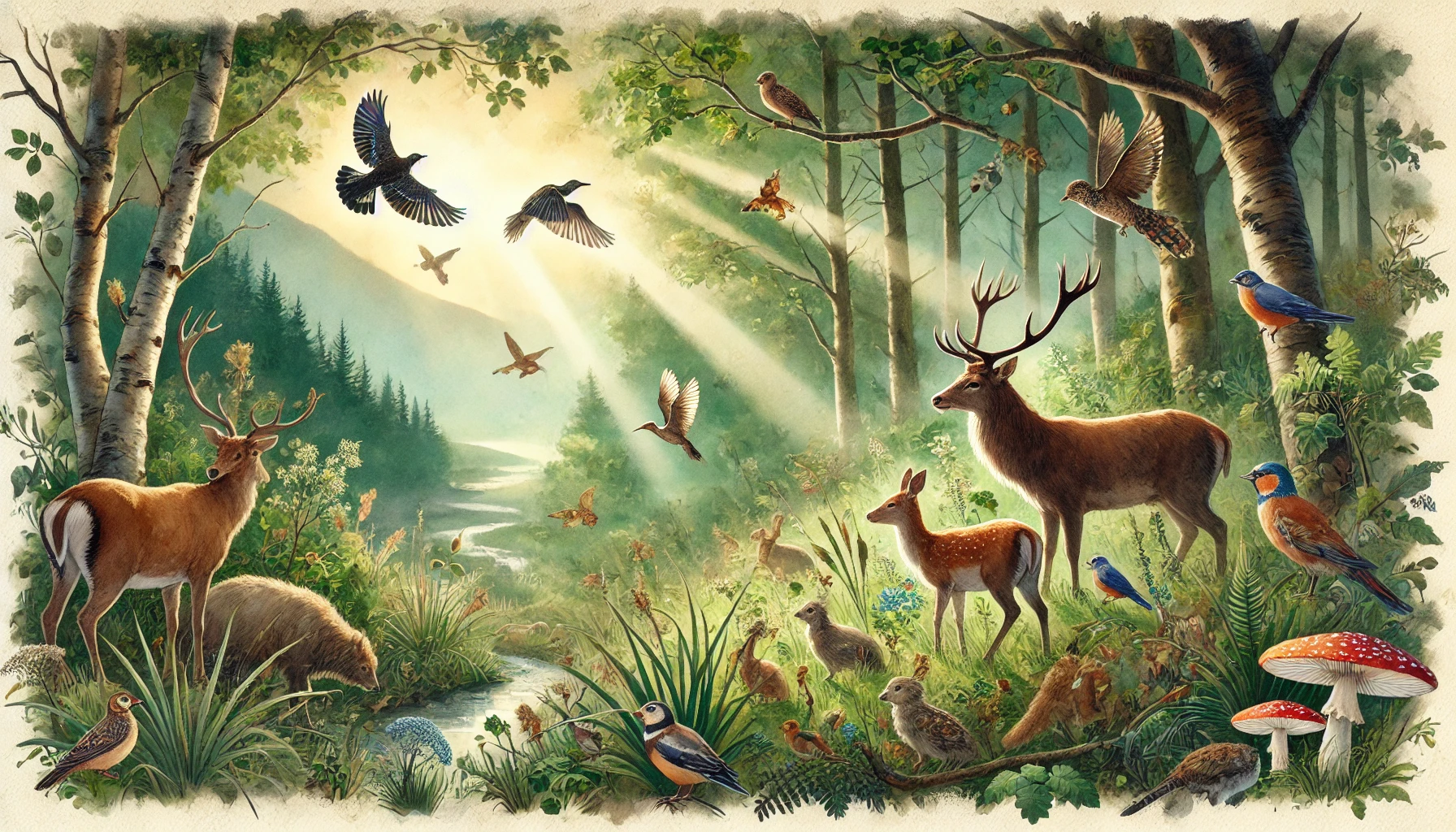In a world where urban landscapes are expanding and industries are accelerating, the need to conserve wildlife has never been more critical. Wildlife conservation isn’t just about protecting animals; it’s a commitment to preserving ecosystems, biodiversity, and even the very resources upon which human life depends. Every action toward conservation brings us closer to a sustainable and balanced world.
Table of Contents
- Understanding the Importance of Wildlife
- Strategies for Wildlife Conservation
- Taking Small Steps: How You Can Help
- The Broader Impact of Wildlife Conservation
Understanding the Importance of Wildlife
The world’s ecosystems are incredibly interconnected. Each species plays a specific role, contributing to a balance that maintains the health of our planet. Whether it’s bees pollinating plants, trees providing oxygen, or apex predators controlling populations, every organism supports another. When one species becomes endangered or goes extinct, it disrupts this natural balance, often leading to severe ecological consequences. Conserving wildlife means preserving these intricate relationships.
Consider the endangered African elephants: beyond their role in tourism, they’re ecosystem engineers who create paths in dense forests, enabling smaller animals to move around and new plants to grow. Protecting such keystone species can help maintain the integrity of entire habitats.
Key Strategies for Wildlife Conservation
1. Protecting Natural Habitats
Deforestation, urbanization, and agriculture are among the leading causes of habitat loss. Protecting natural habitats, especially those home to endangered species, is essential. Many conservation groups advocate for creating protected areas, like national parks and wildlife reserves, where animals can live undisturbed.
2. Supporting Anti-Poaching Laws
Poaching remains a significant threat to wildlife populations worldwide, with species like rhinos, tigers, and elephants at particularly high risk. Strong anti-poaching laws and strict penalties can help deter illegal activities. Supporting organizations that work against poaching is another impactful way to contribute to wildlife preservation.
3. Promoting Sustainable Resource Use
Sustainable practices help limit the overuse of natural resources. By conserving water, reducing deforestation, and supporting sustainable agriculture, we help preserve habitats. Small changes in consumption habits, like choosing sustainably sourced products and reducing waste, make a big difference.
4. Education and Awareness
Educating communities, especially those living near wildlife habitats, about conservation’s importance leads to more sustainable interactions with nature. Education initiatives can foster a sense of pride in natural heritage and encourage local people to become guardians of their own environments.
5. Rehabilitation and Breeding Programs
Conservation programs that focus on breeding endangered species in captivity, then reintroducing them into the wild, play a vital role in population recovery. Successful breeding programs for species like pandas and condors show how captive breeding efforts can re-establish populations and strengthen genetic diversity.
Taking Small Steps: How You Can Help
1. Reduce, Reuse, Recycle
Waste reduction directly benefits wildlife by decreasing pollution. Plastic, for example, poses a grave threat to marine life, which can ingest or become entangled in plastic waste. By practicing the three R’s — reduce, reuse, recycle — you minimize waste in natural habitats.
2. Support Wildlife-Friendly Products
From sustainably sourced food to eco-friendly products, choosing wildlife-friendly options helps protect animals and their habitats. Seek out certifications like the Rainforest Alliance and the Marine Stewardship Council to make environmentally responsible choices.
3. Volunteer for Conservation Programs
Many organizations offer volunteer opportunities for wildlife conservation. Whether you’re planting trees, monitoring endangered species, or supporting anti-poaching efforts, every bit of assistance helps make an impact.
4. Spread the Word
Social media and conversations with friends are powerful tools to increase awareness. Sharing information about endangered species, conservation efforts, or simple lifestyle changes can inspire others to take action.
The Broader Impact of Wildlife Conservation
Wildlife conservation isn’t just about saving animals; it’s about preserving the ecosystems that sustain life. Biodiversity ensures a stable environment, cleaner air, fertile soil, and fresh water — all necessary for human survival. When we protect wildlife, we protect our planet’s health, and in turn, our own future.
“In the end, we will conserve only what we love; we will love only what we understand; and we will understand only what we are taught.” — Baba Dioum, Senegalese environmentalist.
“The continued existence of wildlife and wilderness is important to the quality of life of humans.” – Jim Fowler
“Look deep into nature, and then you will understand everything better.” – Albert Einstein
“Wildlife is something which man cannot construct. Once it is gone, it is gone forever.” – Joy Adamson
“We won’t have a society if we destroy the environment.” – Margaret Mead
“In wilderness is the preservation of the world.” – Henry David Thoreau
Making Wildlife Conservation Part of Daily Life
Imagine a world where each of us takes one small step daily for conservation. Whether it’s planting a tree, choosing sustainable products, or educating someone else, these actions collectively have the power to bring back balance to our ecosystems. Start today, and remember that your efforts, however small, contribute to a brighter future for all living beings.
Tags: Biodiversity, Conservation Efforts, Endangered Species, Environmental Awareness, Habitat Preservation, Nature Protection, Protecting Nature, Save Wildlife, Sustainable Living, Wildlife Conservation
